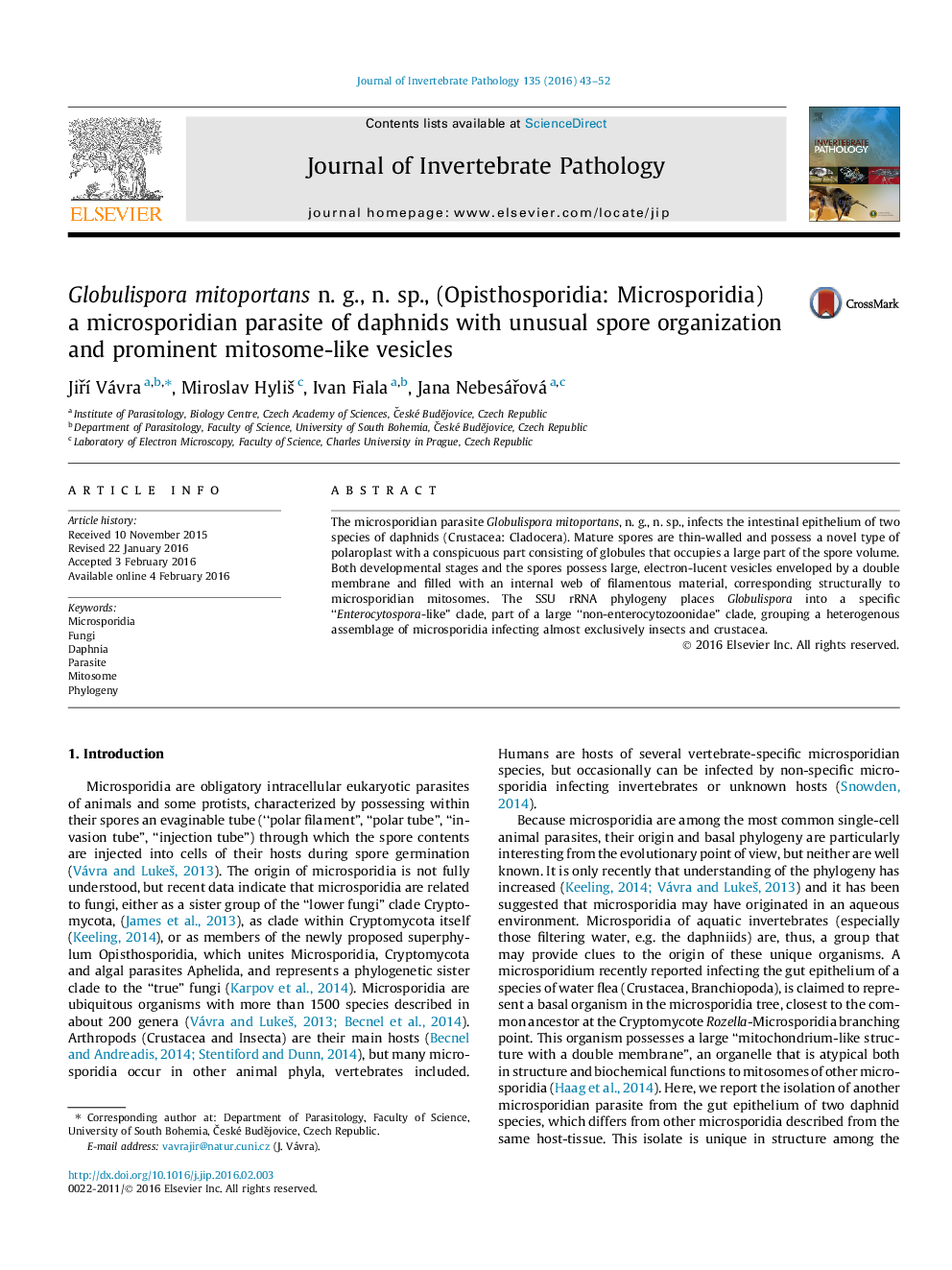| Article ID | Journal | Published Year | Pages | File Type |
|---|---|---|---|---|
| 4557518 | Journal of Invertebrate Pathology | 2016 | 10 Pages |
•Globulispora mitoportans represents a new microsporidian genus and species.•A novel type of microsporidian polaroplast is described.•Mitosome-like vesicles of atypical form are reported.•A new microsporidia phylogeny clade “Enterocytospora-like” is proposed.
The microsporidian parasite Globulispora mitoportans, n. g., n. sp., infects the intestinal epithelium of two species of daphnids (Crustacea: Cladocera). Mature spores are thin-walled and possess a novel type of polaroplast with a conspicuous part consisting of globules that occupies a large part of the spore volume. Both developmental stages and the spores possess large, electron-lucent vesicles enveloped by a double membrane and filled with an internal web of filamentous material, corresponding structurally to microsporidian mitosomes. The SSU rRNA phylogeny places Globulispora into a specific “Enterocytospora-like” clade, part of a large “non-enterocytozoonidae” clade, grouping a heterogenous assemblage of microsporidia infecting almost exclusively insects and crustacea.
Graphical abstractFigure optionsDownload full-size imageDownload as PowerPoint slide
